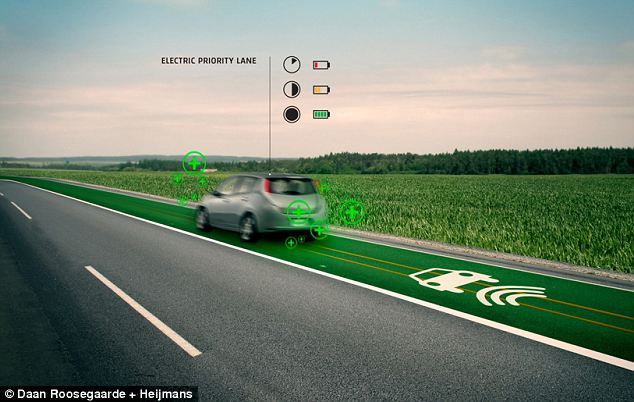The Netherlands is one of the best countries to start experimenting with roads that have the ability to contactless recharge electric vehicles, or so Dr. Pavol Bauer believes. He has published three papers on this topic this month.
With cold weather hampering the energy efficiency of electric cars, who wouldn’t get range anxiety? The fear of getting stranded because your electric vehicle’s battery has run flat is the biggest impediment to the widespread adoption of electric cars.
But what if future electric cars wouldn’t need batteries anymore, or at least not the large specimens they do now?
Electrical power conversion expert Dr. Pavol Bauer (EEMCS faculty) is working on a technology that might one day allow electric vehicles to run off of grid power instead of batteries, or, even better, from electricity generated by solar panels and wind mills installed all along the highway. The technology to achieve this is called inductive charging.
Inductive charging, or wireless charging, is nothing new. Electric toothbrushes are charged this way. An electromagnetic field is used to transfer energy between two objects. To overcome the air gap, or in the case of your toothbrush, the barrier formed by the plastic shell, high frequencies (usually around 100 kilohertz) are used and the coils are tuned to the same resonance frequency.
With improvements in semiconductor technology, allowing for ever higher frequencies, the efficiency of the inductive charging is rising quickly, leading to negligible losses of energy.
“The wireless charging of electric vehicles by means of magnetic coils in the road surface has become feasible now,” Bauer states while holding in his hand a device which illustrates the above mentioned developments. The device contains a switch made of silicon carbide instead of just silicon, which can deal with frequencies of up to 400 kilohertz.
Bauer believes cars shouldn’t just be recharged when they are waiting for a traffic light (a much proposed scenario), they should also be recharged while driving. In one of his articles which he wrote together with his colleague Swagat Chopra, he calculated that, on average, for this on the road recharging to be a success, every kilometer of Dutch highways needs to be equipped with a three hundred meter long stretch of magnetic coil. The best configuration depends on the speed of the cars and the number of cars passing by.
Instead of connecting the magnetic coils to the power grid, they could be fed by solar panels and windmills installed along the highway. Taken that each car needs about 30 kilowatts and that by 2030 there will be about one million electric cars, Bauer calculated that it should be feasible to recharge all of these electric cars by that time on highways using just solar panels and windmills. “I calculated that this is realistic. Now I need to convince investors.”
It is a pity for the researcher that the large open air experiment, road N329 near the town of Oss, hasn’t got any magnetic coils in it. This road, also called the Highway of the Future, is equipped with leds that show drivers at what speed they should drive to obtain a green light at all traffic lights. It is set to be opened in 2013.
“Of course it is disappointing that this highway of the future hasn’t been equipped for wireless charging of electric vehicles,” says Bauer. Especially, since Bauer argues, the Netherlands would be the ideal country to start experimenting with this technology since it is flat (which means cars can drive efficiently) and it has a high density of cars, making it easier to obtain returns on investments.
“Industry wasn’t ready for it yet,” Bauer concludes. “But the coils can still be put in the tarmac at a later stage.”
The three articles by Bauer and colleagues, published in IEEE transactions on industrial electronics, January 2013:
Driving range extension of ev with on-road contactless power transfer – a case study. DOI: 10.1109/TIE.2011.2182015
Control method for wireless inductive energy transfer systems with relatively large air gap. DOI: 10.1109/TIE.2011.2163917
Adaptive sliding-mode control for a multiple-user inductive power transfer system without need for communication. DOI: 10.1109/TIE.2012.2200209



Comments are closed.